There is a growing consensus among the global scientific community that the planet is under threat. The danger they warn of is by no means a new one; in fact it is the same one that many hypothesize led to the extinction of the dinosaurs approximately 65 million years ago - asteroids.
Every year more of these clusters of metal, ice, and rock hurtling through space are observed by astronomers. From its operations center in Darmstadt, the European Space Agency (ESA) is deeply involved in researching asteroids and has been cooking up a cosmic caper to pay one a visit for the better part of a decade. But why all the fuss?
According to US space agency NASA, the Solar System is host to more than one million of these so-called Near Earth Objects (NEOs), a term that includes comets and asteroids, that are greater than 40 meters in diameter, considered the threshold size for them to penetrate the Earth's atmosphere. NASA is also tracking more than 1,100 asteroids at least two kilometers in diameter.
Flying blind
The National Academy of Sciences released a report in the US late last week stating that the annual budget allocated towards NEO detection is insufficient. Currently NASA spends $4 million (2.8 million euros) each year attempting to detect NEOs, but restricts its search to those larger than 140 meters in diameter, which sets the threshold too high, the report said.
"It means we are not looking for the small ones which can cause huge damage on earth," astronomy professor Mike A'Hearn of the University of Maryland told Reuters.
On December 30, Anatoly Perminov, chief of Russia's Space Agency, Roscosmos, told Russian media that the agency was drawing up plans to prevent a collision between an asteroid known as 99942/Apophis and the Earth.
Apophis, measuring approximately 270 meters in diameter, regularly passes through the Earth's orbit on its own elliptical trip around the Sun. Apophis made waves in the scientific community when first discovered because it was initially believed that the asteroid would collide with the Earth on Friday the 13th of April, 2029.
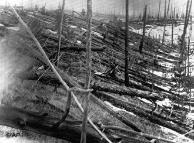
But some are still concerned. In 1908 an object with a diameter estimated between 45 and 70 meters exploded in mid-air after penetrating the atmosphere above Tunguska, Siberia. The blast, estimated at 15 megatons, leveled 2,000 square miles of forest.
"If the Tunguska meteorite fell down in Europe; if it fell down in, say, Germany, our history would be different," Valery Menshikov, head of Roscosmos' Space Systems R&D told RT television.
"With asteroids it's not just the probability of an impact," Michael Khan of the ESA told Deutsche Welle. "It's also what the consequences of an impact would be. This asteroid (Apophis) would pack a hefty punch."
"You take some of the largest nuclear bombs ever exploded, group them together and multiply that by ten and you have approximately the size of the explosion caused by a collision with Apophis," he said.
Tilting at asteroids
While Apophis has been a major cause for consternation since its discovery in 2004, ESA has been drawing up plans to further study and attempt to deflect asteroids since 2003.
The mission, dubbed Don Quijote, planned to send two unmanned spacecraft to a candidate asteroid, one not so close to Earth that it would pose a threat if its deflection went awry. The first vessel, Sancho, would arrive and orbit the object, taking precise measurements of the asteroid's orbital path for up to six months.
Then the second craft, Hidalgo, would be piloted remotely to fly into and impact the asteroid, altering its orbit, while Sancho maintained its observation to see how the orbit had changed. The result of such a mission, Khan said, would be to establish whether asteroid deflection was possible, as well as to gather essential information about the composition of asteroids.
"If it's just a flying rubble pile it may well be that when you hit it, it would be like ramming your fist into bag of potatoes, moving the potatoes around but the bag would still continue on its course," Khan said.
Lengthy timetables
Due to budget constraints ESA recently dropped the impactor phase of the mission, but Khan is hopeful that increased international interest could prompt one of the partners behind the mission to reintroduce Hidalgo to the mission profile.
Don Quijote is now planned to send the Sancho spacecraft to orbit Apophis, since there is no risk of accidentally deflecting it towards Earth, and Khan said he anticipates a launch in 2017, barring any problems.
Missions dealing with asteroid detection and deflection throughout the various space agencies tend to be small, according to Khan, and typically are not accorded the importance they deserve, a sentiment that is echoed from Russia and the US.
One thing ESA, NASA and Roscosmos all seem to agree on is that the research of these objects in space is an underemphasized priority, as currently the only mitigation measures that exist would require decades of warning to prevent catastrophe of global proportions.
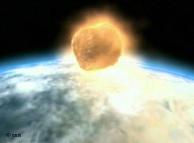
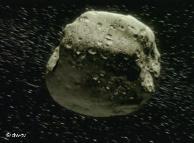
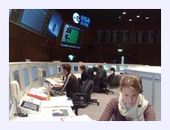
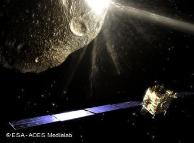



Reader Comments
to our Newsletter